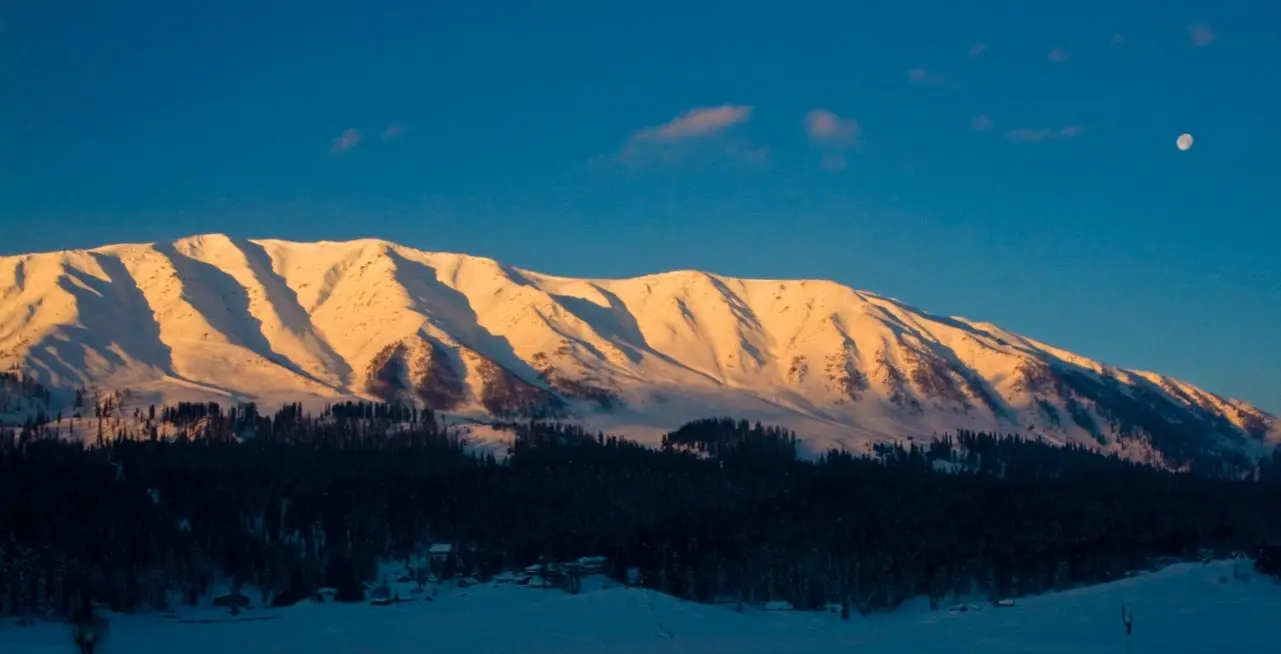
The most complete website about Gulmarg Ski Resort
Gulmarg Weather
During the winter months (December to March), the Pir Panjal mountain range receives heavy snowfall while rain is common in the Kashmir Valley. This weather pattern is due to winds originating in the eastern Mediterranean Sea.
Gulmarg's Climate is similar to the European Alps. You can expect the temperature to be around the same as a European ski resort. The only difference (and a good one) is that annual snowfall levels in Gulmarg Ski Resort are roughly double the levels of European resorts. A great reason to Ski Himalaya!
Avalanche Advisory for Gulmarg, Kashmir, India
Skiing in India and Gulmarg is somewhat different from most resort you are use to.
The Gulmarg Ski Patrol posts a regular Avalanche Advisory. Find a detailed analyze of the snowpack, snow layers and avalanche forecast on the Gulmarg Avalanche advisory. Read, analyze and follow the snowpack to make better decisions out there.
Just follow this link: Gulmarg Avalanche Advisory.
Snow Forecast for Gulmarg, Kashmir, India
Our favorite weather site, Windy.com. Here is the current snow depth. Close the forecast, click on the red "X", then click beside Gulmarg to find the snow depth. It is also possible to see forecasts or other options by clicking the small orange circle at the top right.

View detailed snow forecast for Gulmarg at:
snow-forecast.com
We have observed this site for many years and have found that it is pretty accurate…most of the time Gulmarg receives more snow than indicated on the site.
More Gulmarg Weather Forecast
Yr.no Gulmarg Weather Forecast. This Norwegian weather forecast site is excellent for forecasting the amount of snow to be expected in Gulmarg. It also has lots of excellent info like the wind direction and statistics.
Meteoblue Gulmarg Weather Forecast. This weather forecast site from Switzerland is excellent its high quality Satellite Cloud cover. It also offers excellent weather map for Gulmarg, India.
The Weather Pattern: Gulmarg, the Pir Panjals, the Himalayas – How Will it Affect Your Ski Vacation?
In the winter, strong humid winds originating in the Mediterranean Sea cross over Iran and Afghanistan, drawing humidity from the Indus River, and flow down to the west side of the Pir Panjal and Himalaya mountain ranges. These prevailing winds are southerly so are favorable to the northerly aspect.
When the jet stream moves south of the Himalayas, these strong winds are pushed up the mountains. The rapid rise of air is very fast and strong, thereby condensing the humidity contained in the air mass at an accelerated pace.
The western Himalayas are a configured chain of different mountain ranges. There is a large scale weather system, known as Western Disturbance or WD. The first mountain chain to interact with WD is the Pir Pinjals. As Gulmarg and Mt. Apharwat are situated on the westernmost part of the Himalayas and the Pir Panjals, they are the first to get hit and receive most of that humidity that needs to come down. Gulmarg is at 2,660 meters and Mt. Apharwat's summit is at 4,124 meters… Lots of Fresh Snow falls every winter… Pow Pow!
It actually snowed 232 cm on January 2-3, 2006! Another great reason to Ski India…
A typical winter weather pattern in Gulmarg is characterized by intense storms followed by periods of more stable weather, including light wind and mild temperatures. During all of these weather events, you can find ideal snow conditions somewhere on the mountain.
Gulmarg Climate
The climate in the Kashmir Valley can be defined as moderate, especially compared to other parts of India. It is generally cool in the spring and fall, mild in the summer (with little rain), and cold in the winter. The weather is always cooler in the hilly areas, like Gulmarg.
Gulmarg Weather patterns are unpredictable. As the elevation changes, so does the climate.